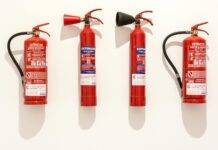
Fire Safety Quiz (MCQ) Test
Introduction
Fire safety is of utmost importance to protect lives and property. Being knowledgeable about fire safety measures can make a significant difference during emergencies. One effective and engaging way to educate people about fire safety is through quizzes. In this article, we will provide a comprehensive list of fire safety quiz questions and answers that will not only test your knowledge but also help you learn more about fire safety practices.
Why Should You Take a Fire Safety Quiz?
Before we dive into the quiz questions, let’s understand the significance of taking a fire safety quiz. Quizzes are interactive and fun ways to learn, retain information, and assess your understanding of a particular subject. Fire safety quizzes can help reinforce essential fire safety tips and procedures, making you better prepared to handle emergency situations effectively.
Fire Safety Quiz Questions and Answers
- Question: What are the three elements of the fire triangle?
- A) Water, Earth, and Air
- B) Heat, Fuel, and Oxygen
- C) Carbon dioxide, Hydrogen, and Nitrogen
- D) Iron, Copper, and Silver
- Question: What does the “PASS” acronym stand for in relation to using a fire extinguisher?
- A) Pull, Aim, Spray, Sweep
- B) Point, Attach, Squeeze, Splash
- C) Press, Activate, Squirt, Spray
- D) Pick, Align, Shoot, Scatter
- Question: Which of the following fire extinguishers is suitable for extinguishing Class A fires?
- A) Yellow fire extinguisher
- B) Blue fire extinguisher
- C) Red fire extinguisher
- D) Green fire extinguisher
- Question: What is the first thing you should do if you hear a fire alarm?
- A) Investigate the source of the alarm
- B) Call the fire department immediately
- C) Evacuate the building immediately
- D) Use a fire extinguisher to put out the fire
- Question: Name a potential fire hazard that might exist in a kitchen?
- A) Blankets and pillows
- B) Cooking oil and grease buildup
- C) Toys and books
- D) Carpets and rugs
- Question: How do smoke detectors work?
- A) They emit a loud sound when they detect smoke
- B) They release water to extinguish the fire
- C) They send a distress signal to the fire department
- D) They sense smoke particles and trigger an alarm
- Question: What steps should you take if your clothes catch fire?
- A) Run around to extinguish the flames
- B) Cover your body with a blanket
- C) Stop, drop to the ground, and roll
- D) Jump into a pool of water
- Question: How often should fire drills be conducted in workplaces?
- A) Once a year
- B) Every six months
- C) Once a month
- D) Every two years
- Question: Is it essential to have a designated meeting point during a fire evacuation?
- A) Yes, to ensure everyone is accounted for
- B) No, it’s not necessary
- C) Only for large buildings
- D) It depends on the fire’s severity
- Question: Can young children use fire extinguishers?
- A) Yes, with adult supervisionB) No, fire extinguishers are too dangerous for childrenC) Yes, if they are strong enough to handle itD) No, children should not be involved in fire emergencies
- Question: Which type of fire extinguisher is suitable for extinguishing electrical fires?
- A) Red fire extinguisher
- B) Blue fire extinguisher
- C) Yellow fire extinguisher
- D) Black fire extinguisher
- Question: What should you do if you encounter smoke while evacuating during a fire?
- A) Keep running to exit quickly
- B) Hold your breath and continue evacuating
- C) Go back and find an alternate route
- D) Stay low and crawl to the nearest exit
- Question: How often should fire extinguishers be inspected to ensure they are in good working condition?
- A) Once every two years
- B) Once every three years
- C) Monthly
- D) Annually
- Question: Which fire extinguisher is suitable for Class C fires?
- A) Yellow fire extinguisher
- B) Blue fire extinguisher
- C) Red fire extinguisher
- D) Black fire extinguisher
- Question: What does the “RACE” acronym stand for in relation to fire response in workplaces?
- A) Rescue, Alarm, Contain, Extinguish
- B) Remove, Assess, Control, Evacuate
- C) Report, Alert, Call, Escape
- D) Respond, Act, Communicate, Evaluate
- Question: When using a fire extinguisher, what is the recommended distance between you and the fire?
- A) As close as possible
- B) 5 feet (1.5 meters)
- C) 10 feet (3 meters)
- D) 20 feet (6 meters)
- Question: Which type of fire is caused by flammable liquids such as gasoline or oil?
- A) Class A fire
- B) Class B fire
- C) Class C fire
- D) Class D fire
- Question: In case of a fire, what should you do if you are unable to safely evacuate?
- A) Hide under a table or desk until help arrives
- B) Use a fire extinguisher to put out the fire
- C) Open a window and call for help
- D) Stay low, close the door, and use a cloth to block smoke
- Question: Which type of fire extinguisher is suitable for Class D fires involving flammable metals?
- A) Red fire extinguisher
- B) Blue fire extinguisher
- C) Yellow fire extinguisher
- D) Silver fire extinguisher
- Question: Why is it essential to have fire evacuation drills in schools?
- A) To give students a break from their regular schedule
- B) To test the fire alarm system
- C) To ensure students and staff know how to evacuate safely
- D) To entertain students and make learning fun
Fire safety knowledge is crucial for everyone, and being prepared can make a significant difference in an emergency situation. By understanding these questions and answers, you can enhance your fire safety awareness and contribute to a safer environment for yourself and others.

























Hi
Very good keep the sharing
Very good . Keep the like sharing